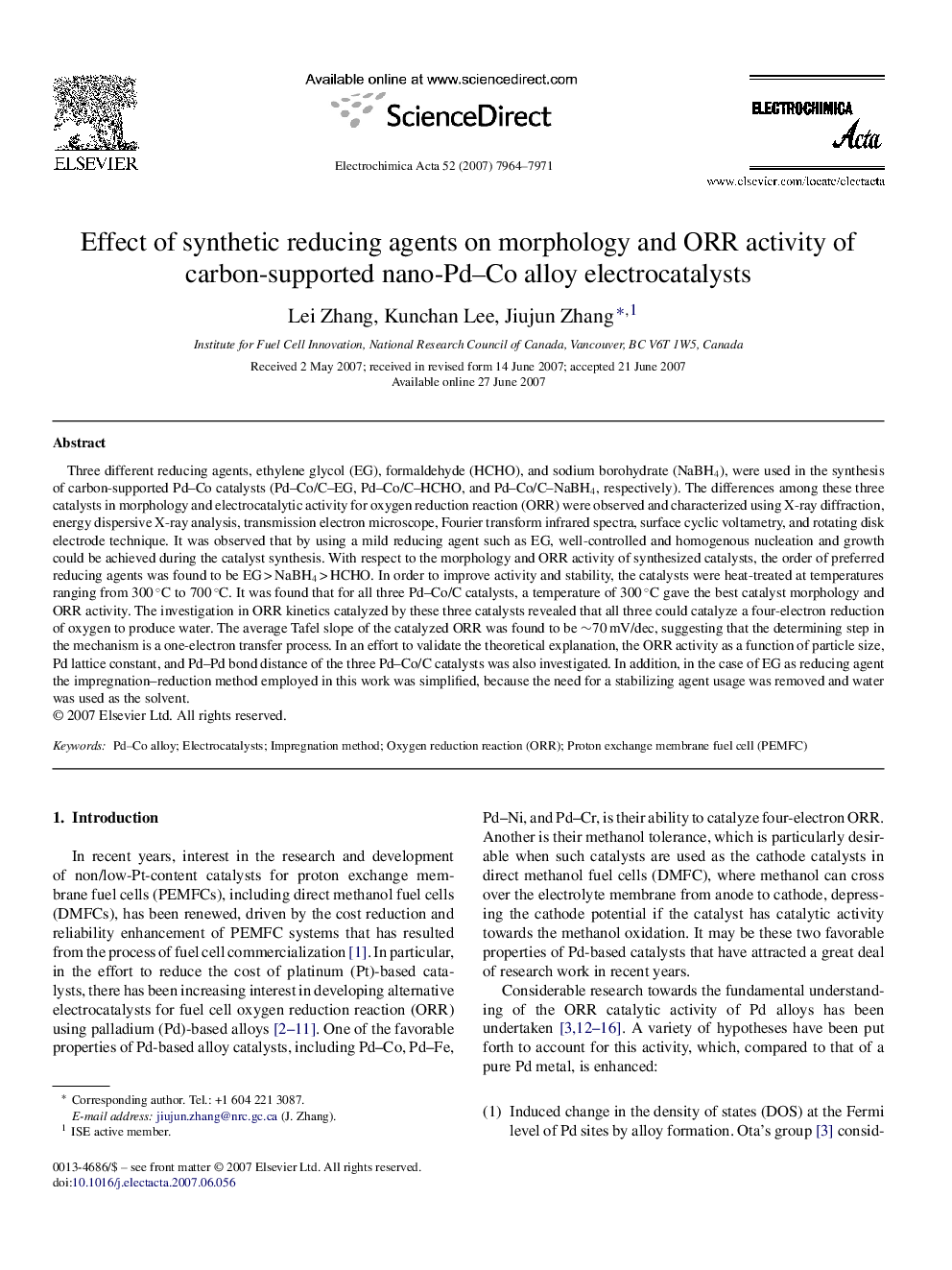| Article ID | Journal | Published Year | Pages | File Type |
|---|---|---|---|---|
| 195561 | Electrochimica Acta | 2007 | 8 Pages |
Three different reducing agents, ethylene glycol (EG), formaldehyde (HCHO), and sodium borohydrate (NaBH4), were used in the synthesis of carbon-supported Pd–Co catalysts (Pd–Co/C–EG, Pd–Co/C–HCHO, and Pd–Co/C–NaBH4, respectively). The differences among these three catalysts in morphology and electrocatalytic activity for oxygen reduction reaction (ORR) were observed and characterized using X-ray diffraction, energy dispersive X-ray analysis, transmission electron microscope, Fourier transform infrared spectra, surface cyclic voltametry, and rotating disk electrode technique. It was observed that by using a mild reducing agent such as EG, well-controlled and homogenous nucleation and growth could be achieved during the catalyst synthesis. With respect to the morphology and ORR activity of synthesized catalysts, the order of preferred reducing agents was found to be EG > NaBH4 > HCHO. In order to improve activity and stability, the catalysts were heat-treated at temperatures ranging from 300 °C to 700 °C. It was found that for all three Pd–Co/C catalysts, a temperature of 300 °C gave the best catalyst morphology and ORR activity. The investigation in ORR kinetics catalyzed by these three catalysts revealed that all three could catalyze a four-electron reduction of oxygen to produce water. The average Tafel slope of the catalyzed ORR was found to be ∼70 mV/dec, suggesting that the determining step in the mechanism is a one-electron transfer process. In an effort to validate the theoretical explanation, the ORR activity as a function of particle size, Pd lattice constant, and Pd–Pd bond distance of the three Pd–Co/C catalysts was also investigated. In addition, in the case of EG as reducing agent the impregnation–reduction method employed in this work was simplified, because the need for a stabilizing agent usage was removed and water was used as the solvent.
